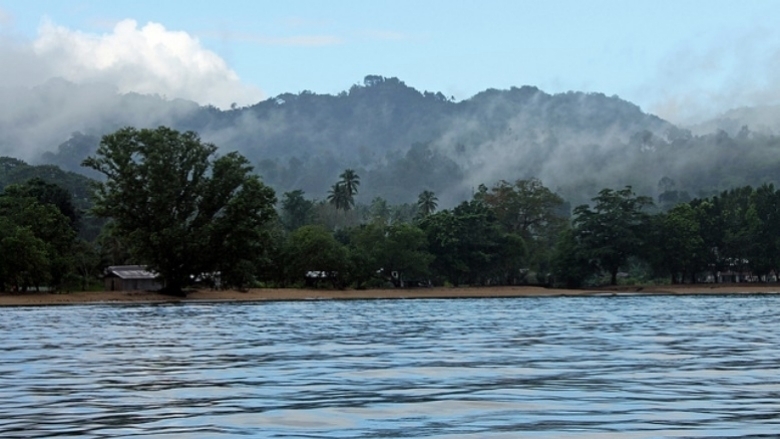In recent years, small states—defined by the World Bank Group as countries with a population of 1.5 million or less—have taken a collective stand on the international stage to highlight the development challenges they face and urge more attention to their concerns. A new report, World Bank Group Engagement with Small States: Taking Stock takes an in-depth look at both the challenges these states face, and the range of WBG activities, programs, lending, and trust funds targeted at this group.
The report looks at three distinct aspects of small states’ development: economy, finance, and institutions; sustainable development; and human development.
- Economy, Finance, and Institutions. Small states are characterized by limited human capital, and typically have fewer exports and trade partners as a result of their size. Limited potential for domestic revenue generation combined with a high cost of public services leads to typically higher debt levels.
- Sustainable Development. Strengthening climate and disaster resilience remains a challenge for many small states. Small states are particularly susceptible to natural disasters as well as the effects of climate change, which pose critical challenges – with varying degrees of severity – causing major costs to human life and infrastructure and creating considerable macroeconomic volatility.
- Human Development. Although many small states have made progress on infant mortality, there is still an unfinished agenda of low child immunization rates, the reemergence of vector-borne diseases, and the challenge of non-communicable disease. Women’s employment prospects and earnings are significantly worse than men’s, and women have fewer productive and economic resources. In addition, several small states are on the WBG’s list of fragile and conflict- affected situations.
The report also examines the World Bank Group’s commitments in small states. Efforts include:
- IDA as a primary financing platform of support. Resources for small states have increased over the last few IDA replenishments; specific IDA provisions relevant to small states include the Small Islands Economies Exception, the IDA Crisis Response Window and Regional IDA.
- Development policy financing, widely used to support policy reforms to enable small states to better adapt to climate change, strengthen disaster preparedness, provide resources for infrastructure investments and build fiscal buffers to address market volatility.
- Investment project financing, available for a new resilience project, a long-term national or regional resilience program or investments in infrastructure.
- Technical assistance, widely utilized for sector diagnostics, specialized advice, or training.
- The blue economy is centered on the planet’s oceans. The Bank hosts the Global Program on Fisheries – PROFISH -, a multi-donor trust fund supporting fisheries and aquaculture.
- Being the single largest provider of climate and disaster-resilience-related investment finance. During FY11-15, the total WBG assistance to climate and disaster resilience in small states averaged nearly US$152 million each year.
- Bank-supported regional catastrophe insurance pools such as the Caribbean Catastrophe Risk Insurance Fund and the Pacific Catastrophe Risk Assessment and Financing Facility can facilitate access to reinsurance markets on competitive terms. Contingent finance facilities, like the Deferred Drawdown Option for Catastrophic Risk (CAT-DDO) helps some small states implement disaster risk financing strategies.
The report also details the WBG’s ongoing partnerships with other development institutions vis-à-vis small states. Among other initiatives, the WBG will continue to coordinate efforts with the IMF, the Regional Development Banks and the Commonwealth Secretariat on issues of debt sustainability and improved debt management, and will collaborate with UNDP, the Commonwealth Secretariat and OECD on possible and still to be defined vulnerability and resilience indicators. It will also work with CARICOM, the Caribbean Development Bank and IDA on issues of trade facilitation, energy coordination, regional financial sector strengthening and de-risking.
Looking ahead, the report notes that:
- Development assistance will likely remain a key source of foreign exchange for many of small states clients.
- More support is required to prepare small states for extreme weather events or seismic shocks. This could include investment in climate-resilient infrastructure, improved spatial planning to provide for safe zones, enhanced access to contingency resources in the event of a disaster, and investment in early warning systems.
- Innovative financing instruments will insure against market, climate, and disaster risk.
- Similar innovation is required to reduce the debt burden of several middle- to high-income small states. This could include measures to restructure the debt by converting short-term and high-interest commercial debt to more concessional and longer-term debt.
- Support for labor mobility and outmigration is key. Increased investment in education, skills development, and health is required for labor mobility, which would reduce local unemployment and increase remittances.
- Regional integration is critical, despite political hurdles.
- Some small states are ineligible for concessional finance from major multilateral lenders because of their higher per capita income levels. A policy consensus would be welcome on considering multiple dimensions of vulnerability when allocating development finance, exploring options for additional, tailored resilience financing or lines of credit.
The Bank Group will continue to provide valuable knowledge, finance and convening services to address the unique development challenges of small states members, the report concludes.
Last Updated: Jan 20, 2017

